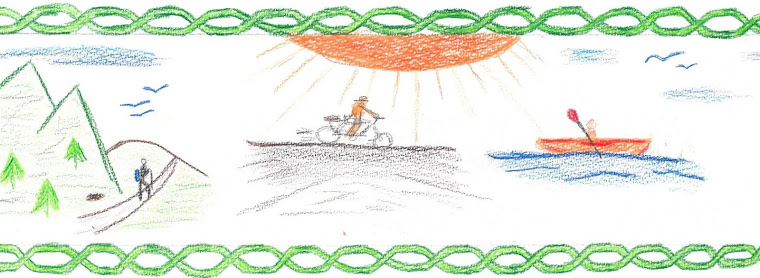Lectionary Ruminations 2.5 is a further revision and refinement
of my Lectionary Ruminations and Lectionary
Ruminations 2.0. Focusing on The Revised Common Lectionary Readings
for the upcoming Sunday from New Revised Standard Version (NRSV) of the Bible, Lectionary Ruminations 2.5 draws on over thirty years of pastoral
experience. Believing that the questions we ask are often more important
than any answers we find, without over reliance on commentaries, I intend with
sometimes pointed and sometimes snarky comments and Socratic like questions, to
encourage reflection and rumination for readers preparing to lead a Bible
study, draft liturgy, preach, or hear the Word. Reader comments are invited and
encouraged.
ISAIAH 5:1-7
5:1 Does this remind you of the Song of Solomon?
Who is speaking? I wonder what this song’s tune sounded like.
5:2 What is the difference between wild grapes
and cultivated grapes?
5:3 In this context, what does it mean to judge?
5:4 Is this a rhetorical question?
5:5 This sounds like a pretty severe judgment.
Why would a vineyard owner do this?
5:6 Now any grapes that might grow will really
and truly be wild grapes.
5:7 So, justice and righteousness are equivalent
to cultivated grapes while bloodshed and cries (resulting from wickedness?) are
the equivalent of wild grapes? What sort of grapes are we?
PSALM 80:1-2, 8-19
80:1 The Isaiah reading gave us vineyard
imagery. Today’s Psalm begins by offering us shepherd imagery. Who is the
Shepherd of Israel? What and where are cherubim?
80:2 Who or what are Ephraim, Benjamin, and
Manasseh?
80:8 Here is some vineyard imagery to juxtapose
with similar imagery from the Isaiah Reading. How do we deal with the
changing and mixed metaphors of shepherds, flocks, and vineyards?
80:9 What came first, Isaiah’s imagery or the psalmis’s
imagery?
80:10-11 Hyperbole?
80:12 This reads like a specific reflection on
Isaiah 5:5-6. Are both the Isaiah reading and the Psalm perhaps
reflecting on a larger cultural and religious image popular at the time?
80:13 Are these allusions to anyone in particular?
80:14 Again?
80:15 What is the symbolism of the right hand?
80:16 Who are “they”?
80:17 Who is “the one at your right hand, the one
whom you made strong for yourself?” How can we not read this illuminated
by Hebrews 11:2?
80:18 Is there a quid pro quo at work here?
80:19 What does God’s shining face symbolize?
80:1-2, 8-19 There are several images in this reading that
can be employed to address God. How many can you identify?
HEBREWS 11:29-12:2
11:29, 30, 31 Note the repetition of ‘By faith.” By
comparison, what have we done recently “by faith?”
11:29 If there had been no faith, would the people
not have passed through the Red Sea as if it were dry ground?
11:30 Is the writer suggesting that miracles rely
upon faith?
11:31 Rahab had faith? What was the nature of
Rahab’s faith?
11:32 I wish the author had taken the time to write
more. Even though Rahab is mentioned, I wish more women had been named.
11:33-34 “By Faith” is replaced by “through faith.”
Is there is difference? I find some of these examples a little too
militaristic.
11:35 What in the world does “Women received their
dread by resurrection” mean? What is a “better resurrection?”
11:36 Is the author now writing about Christian
martyrs?
11:37 This is gruesome. I wonder how children might
hear this.
11:38 Who is the author writing about? This was at
least two centuries before the advent of the desert mothers and fathers.
11:39 What was promised?
11:40 What does it mean to be made perfect?
12:1 The author has previously given us a long
list of names to include among the great cloud of witnesses, but I am sure
the list is not meant to be all inclusive. What names would you
add? What does it mean to be surrounded by “so great a cloud of witnesses?”
Does this image send shivers up your spine and cause the hairs on the back of
your neck to stand on edge? I think it should! How does this “great a
cloud of witnesses” correlate with the communion of the saints? What is the
nature of the race that is set before us? Is it a sprint or a marathon?
12:2 Do we look to Jesus as the finish line, the
leading runner, the prize, or what? How was Jesus the pioneer and perfecter of
our faith? What was shameful about the cross?
LUKE 12:49-56
12:49 Who is speaking? What does fire represent or
symbolize?
12:50 We had fire language in the previous verse.
Now we have Baptism language. Is this baptism by water or baptism by fire?
12:51 Well, there goes our image of Jesus the
peacemaker. How do we read this in the midst of America’s divisive political
rhetoric?
12:52 Do the numbers matter? What is the meaning of
“household?”
12:53 So much for Christian family values. I
wonder how James Dobson and Focus on the Family handle this verse. Note that
there is no division based on sex or gender.
12:54-56 Apparently weather forecasting was a more
highly developed art or science in Jesus’ day than was social critique.
Do we do any better?
12:55 Why the weather imagery in this and the
preceding verse?
12:56 So weather forecasting is more of a science
than prophecy?
12:49-56 Shall we classify these verses as some of the
tough, harsh, and troubling sayings of Jesus? Is this apocalyptic language?
ADDENDUM
I am a Minister Member of Upper Ohio
Valley Presbytery of the Presbyterian Church (U.S.A.) and am serving as the
Interim Pastor of the Richmond United Presbyterian Church, Richmond, Ohio.
Sunday Worship at Richmond begins at 11:00 AM. Some of my other blog posts have
appeared on PRESBYTERIAN BLOGGERS and The
Trek.
